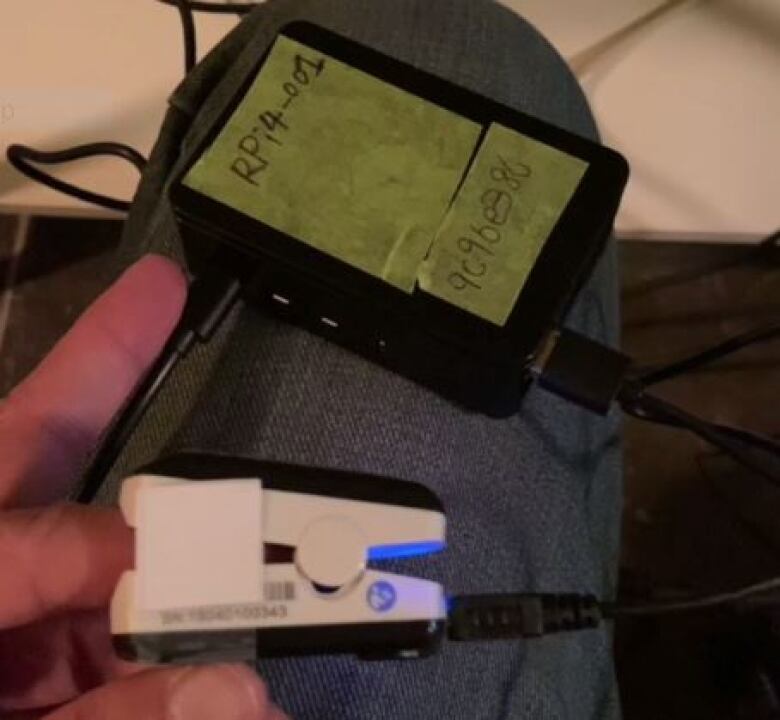A computer 'the size of a credit card' could help doctors monitor COVID-19 patients remotely
U of T engineering team created device that uploads patient's vital signs to the web

A team from the University of Toronto has created a new way for health-care workers to monitor COVID-19 patients without having to set foot in their hospital rooms.
It all began about two weeks ago when a call came from Mount Sinai Hospital asking the university's engineering department to figure out a way to monitor vital signs both continuously and remotely.
"The solution is quite simple," said Professor Willy Wong, who led the project. "When we heard about this opportunity, we were very happy to jump into this."
Jump in they did: working with three PhD candidates, it took Wong just a few days to develop a concept.
They attached a standard fingertip probe, already in use in hospitals to monitor vital signs, to a"very, very small computer about the size of a credit card," explained Wong.
That simple computer, called a Raspberry Pi, can then connect to the internet allowing health-care workers to check on patients from any nursing station computer, or on their smartphone.

"It's about taking these off-the-shelf components that are already designed by others and being able to put this together very, very quickly," Wong said.
Remote monitoring can conserve PPE
The device has two benefits, he says: it givesdoctors the ability to monitor their patients constantly, and allowshealth-care workers to conserve personal protective equipment because they can avoid going into hospital rooms and getting close to patients.
So far, several prototypes are being used in a trial atMount Sinai.
"The feedback that we've heard is that this is a no-brainer," said Wong.
He says he can imagine their solution making a big difference in places like field hospitals and long-term care homes and a retirement home has already been in touch to ask about using the device.
"Certainly, I'm hoping that as the word gets out here that there are more organizations that perk up and say, 'Hey, this important here,'" said Wong.
"We can use this as a way to monitor a large group of people in these sorts of settings where they are trying to battle COVID-19."












_(720p).jpg)


 OFFICIAL HD MUSIC VIDEO.jpg)
.jpg)



























































































